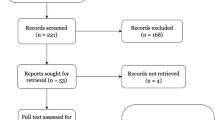Abstract
Background
Coccygodynia can cause severe pain and disability in patients. There are contradictions in the literature regarding the final results of coccygectomy for coccygodynia. We evaluated the long-term effects of coccygectomy on the intensity, characteristics, and manifestation of pain caused by coccygodynia to determine the adequacy of operation among treatment modalities.
Materials and methods
Thirty-four patients with coccygodynia were treated by coccygectomy. In 22 cases, trauma, and in one case childbirth was the cause. 11 cases were regarded as idiopathic. The intensity, characteristics of pain, and the most painful activities were evaluated at an average of 7.6 (3–18) years of follow-up time.
Results
Before the operation, all 34 patients had pain while sitting, moreover, 26 of them had pain during standing, walking, at night or a combination of these. 21 patients had intolerable or very intensive, mainly acute, sharp or burning pain. 11 patients had dyschesia, 2 had dysuria and 6 had dyspareunia. At follow-up, 7 patients were completely free of pain, 15 others had moderate, 11 medium, and only one patient had severe, but none had intolerable pain. Only seven patients had acute, sharp or burning pain postoperatively. The decrease of average pain score from 8.0 to 3.2 was significant (P < 10−12). The number of the patients with dyschesia and dyspareunia decreased from 11 to 7 and from 6 to 3, respectively. Two patients had dysuria, but their complaints did not change after the operation. One of the two patients who needed reoperation had an excellent final result, while the other remained unchanged. 12 and 16 patients (together 82%) regarded the final result of the operation excellent and good, respectively. The condition of five others did not change, while one became worse. The patients with younger age, smaller body mass index, and less co-morbidities had better final result. There were no serious complications.
Conclusion
Coccygectomy for coccygodynia is a safe method to decrease the intensity of pain and other complaints of the patients. The operation can be the choice of treatment if conservative measures fail.
Similar content being viewed by others
References
Albrecht S, Hicks MJ, Antalffy B (1994) Intracoccygeal and pericoccygeal glomus bodies and their relationship to coccygodynia. Surgery 115:1–6
Bayne O, Bateman JE, Cameron HU (1984) The influence of etiology on the results of coccygectomy. Clin Orthop 190:266–272
Dehaine V, Wechsler B, Ziza JM, de-Gennes C, Robain G, Fohanno D, Metzger J, Godeau P (1990) Coccygodynia disclosing Tarlov’s cysts. Rev Med Interne 11:280–284
Jones ME, Shoaib A, Bircher MD (1997) A case of coccygodynia due to coccygeal fracture secondary to parturition. Injury 28:549–550
Kersey PJ (1980) Non-operative management of coccygodynia. Lancet 1(8163):318
Maigne JY, Tamalet B (1996) Standardized radiologic protocol for the study of common coccygodynia and characteristics of the lesions observed in the sitting position. Clinical elements differentiating luxation, hypermobility, and normal mobility. Spine 21:2588–2593
Maigne JY, Lagauche D, Doursounian L (2000) Instability of the coccyx in coccygodynia. J Bone Joint Surg (Br) 82:1038–1041
Nutz V, Stelzner F (1985) Der Glomustumor als Ursache einer Coccygodynie. Chirurg 56:243–246
Polkinghorn BS, Colloca CJ (1999) Chiropractic treatment of coccygodynia via instrumental adjusting procedures using activator methods chiropractic technique. J Manipulative Physiol Ther 22:411–416
Postacchini F, Massobrio M (1983) Idiopathic coccygodynia. Analysis of fifty-one operative cases and a radiographic study of the normal coccyx. Bone Joint Surg (Am) 65:1116–1124
Reichel G, Gaerisch F Jr (1988) Das Piriformis-Syndrom. Ein Beitrag zur Differentialdiagnose von Lumbago und Kokzygodynie. Zentralbl Neurochir 49:178–184
Sehirlioglu A, Ozturk C, Oguz E, Emre T, Bek D, Altinmakas M (2007) Coccygectomy in the surgical treatment of traumatic coccygodynia. Injury 38(2):182–187
Tilscher H, Kantor H, Gangl W, Bogner G (1986) Die Coccygodynie–ein diagnostisches und therapeutisches Problem der Orthopadie. Z Orthop Ihre Grenzgeb 124:628–632
Traycoff RB, Crayton H, Dodson R (1989) Sacrococcygeal pain syndromes: diagnosis and treatment. Orthopedics 12:1373–1377
Wesselmann U, Burnett AL, Heinberg LJ (1997) The urogenital and rectal pain syndromes. Pain 73:269–294
Wray CC, Easom S, Hoskinson J (1991) Etiology and treatment. J Bone Joint Surg (Br) 73:335–338
Ziegler DK, Batnitzky S (1984) Coccygodynia caused by perineural cyst. Neurology 34:829–830
Zook NL, Zook EG (1997) Repair of a long-standing coccygeal hernia and open wound. Plast Reconstr Surg 100:96–99
Conflict of interest statement
No funds were received in support of this study.
Author information
Authors and Affiliations
Corresponding author
Rights and permissions
About this article
Cite this article
Gáspár, L., Jónás, Z., Kiss, L. et al. Coccygectomy has a favorable effect on the intensity, manifestation, and characteristics of pain caused by coccygodynia: a retrospective evaluation of 34 patients followed for 3–18 years. Eur J Orthop Surg Traumatol 19, 403–407 (2009). https://doi.org/10.1007/s00590-009-0442-x
Received:
Accepted:
Published:
Issue Date:
DOI: https://doi.org/10.1007/s00590-009-0442-x




